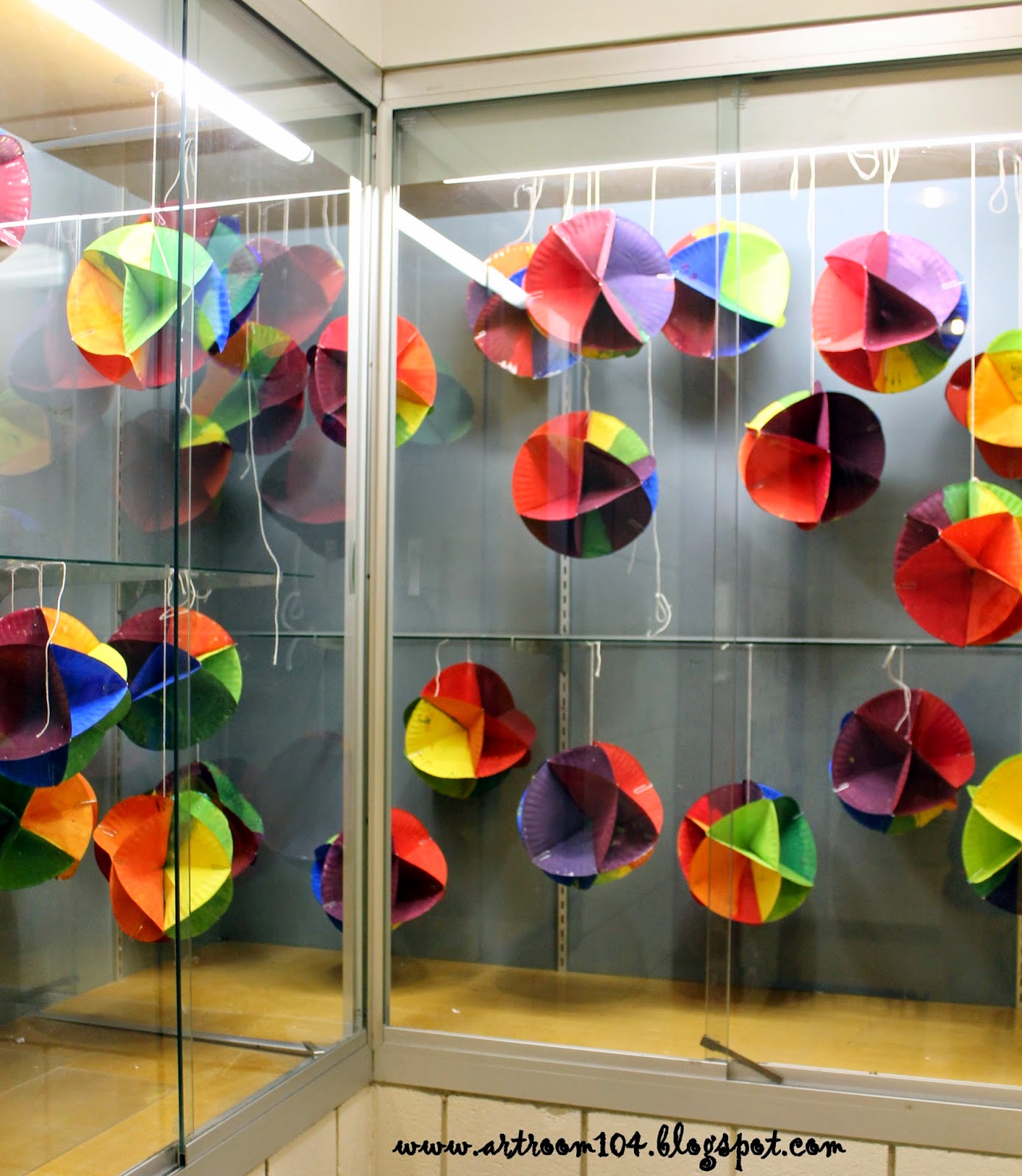All righty, let's get some blog articles written here! Now that we are done to the last four full days, two half days, and one 1/4 day of school (I'm not counting or anything...), I finally have more free time on my hands now that my high school students are all taking their NYS Regents exams instead of being in class.
Back in February, a Roylco representative contacted me and asked if I would like to try out a product for free in return for a review of it on my blog. Of course, I said yes! Who doesn't like to get free products? I decided to try their
Remarkable Art: Moving Eye Portraits. Unfortunately, I was unable to incorporate these into any regular classes this year, however I did try them out with some Extended Day kids as an after school project. These students were mostly 4th and 5th grade, all girls.
The first thing I did was pull out the assortment of faces that come with the kit, and laid them out for the students to pick from.
Next, the students colored the eye balls their color, and we folded them and taped them to the back of the portrait as the directions told us to.
I pulled out all sorts of things for the girls to use. Scrap paper, gems, pipe cleaners, buttons, etc. etc.
These are their finished products from the project. The girls that participated did have fun and took a couple extras home. They wanted to make portraits of their siblings!
So, here is my review. I'll give you the positives, the negatives, and how I will use the rest of the product I have left next year.
Positives
There is an assortment of faces, both shape-wise and skin color-wise.
On each portrait, the cardboard has lines scored where the nose and mouth should go. It's good having the face laid out like that for younger students, especially when you're trying to teach them proportions. This might be a good introduction to self-portraits with younger students...something to get them to see where the nose goes compared to the ears before they try and draw their portrait themselves.
The eyes look cool! I'm not exactly sure that they looked like they were following us, but having them recessed back a little in the eye sockets makes them look more interesting than drawn on the same surface.
This kit gives your students the ability to be extremely creative with what they use to create hair and such. My girls were a little more set on getting them done than really thinking about how they could have been more creative. Though, I think if you were to incorporate this in class as an actually project, you can do a little more leading up to it to encourage the use of mixed media.
Negatives
The face shapes and colors are limiting. Even though i was only working with about eight different girls when we tried these out, they were complaining that they couldn't find a head that really looked like theirs. I almost feel that this project would be a little more beneficial to older students if the faces weren't colored in. Bring it down to the very bare minimum.
The directions for the eyes are a little unclear. The way the edges of the eye piece fold they would stick out from the frame if you placed the eyes in such a way as to leave a little gap between the top surface and the eye piece. I think that's how it has to be put together in order to make it seem like they are "following you", but the folds don't quite match up right to do it properly...at least not without some cutting.
This is definitely something that is meant for younger students. The age on the package says for 5+ yet the girl on the package looks like she is a 3rd grader. I don't like to give my older students something that is already "half-done" for them to complete, at least in class. (After school crafts are a different area where I will sometimes make considerations.)
Next year, I plan on trying out the leftovers I have with my 1st grade students during a portrait unit. In the past, I've done Roy G. Biv collages, so i think this might be a cool thing to incorporate with that project, just to see what they do with it.
You can purchase these kits from
eNasco for $18.30 a box, which has 32 portraits total, or directly from their website for $19.99. For an extra curricular program, craft club or even a regular classroom teacher, this is something I could imagine them purchasing (especially if they aren't confident in the area of arts and crafts!), however I feel like this is not something art teachers would or should spend their budgets on.
If I were ever to do something like this with older students in class, they would not be using this kit. Instead, they would make their own from scratch. In all honesty, that's how I tend to use some Roylco products. For example, my 6th graders designed stamps this year (post coming soon!) for countries they were researching in Social Studies.
Roylco has a stamp kit that you can buy. I bought one a few years back and instead of having the students draw on the stamps (which is how they are meant to be used), I simply have them use the originals as a pattern to trace their stamp. That way, they can alter the edging if they choose to.



















































